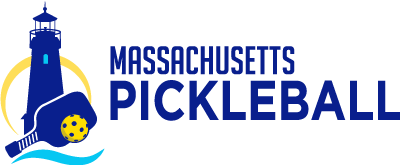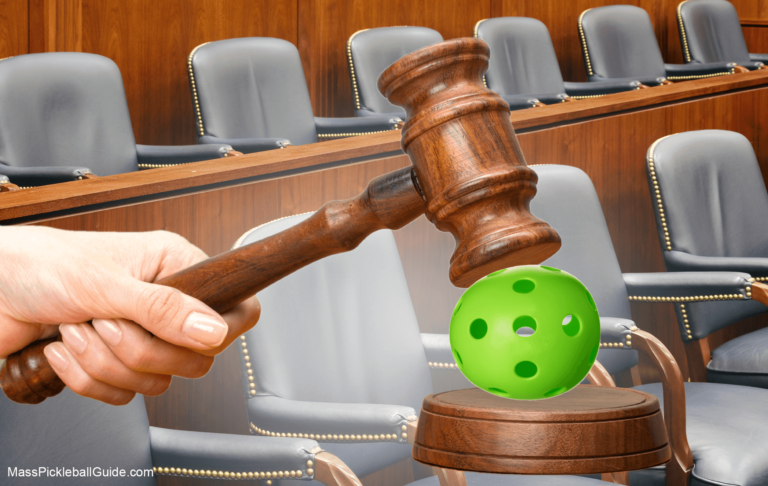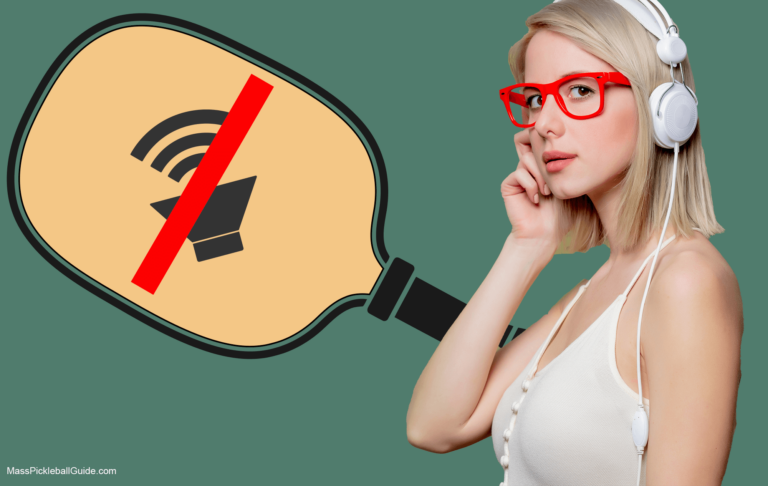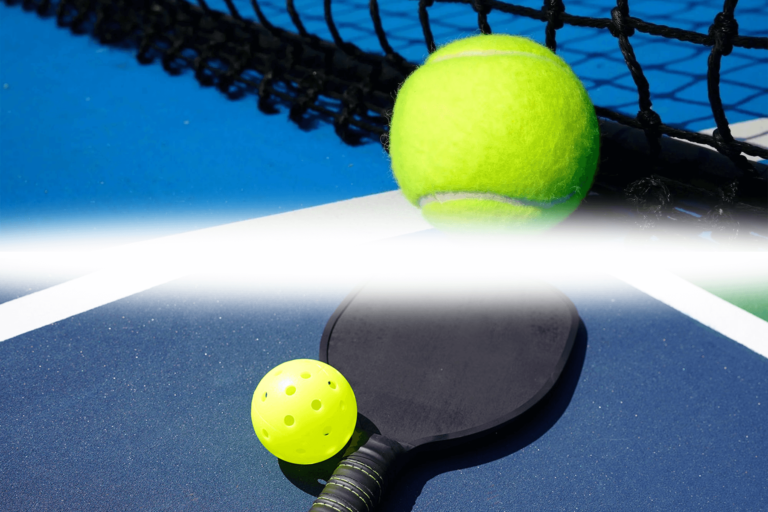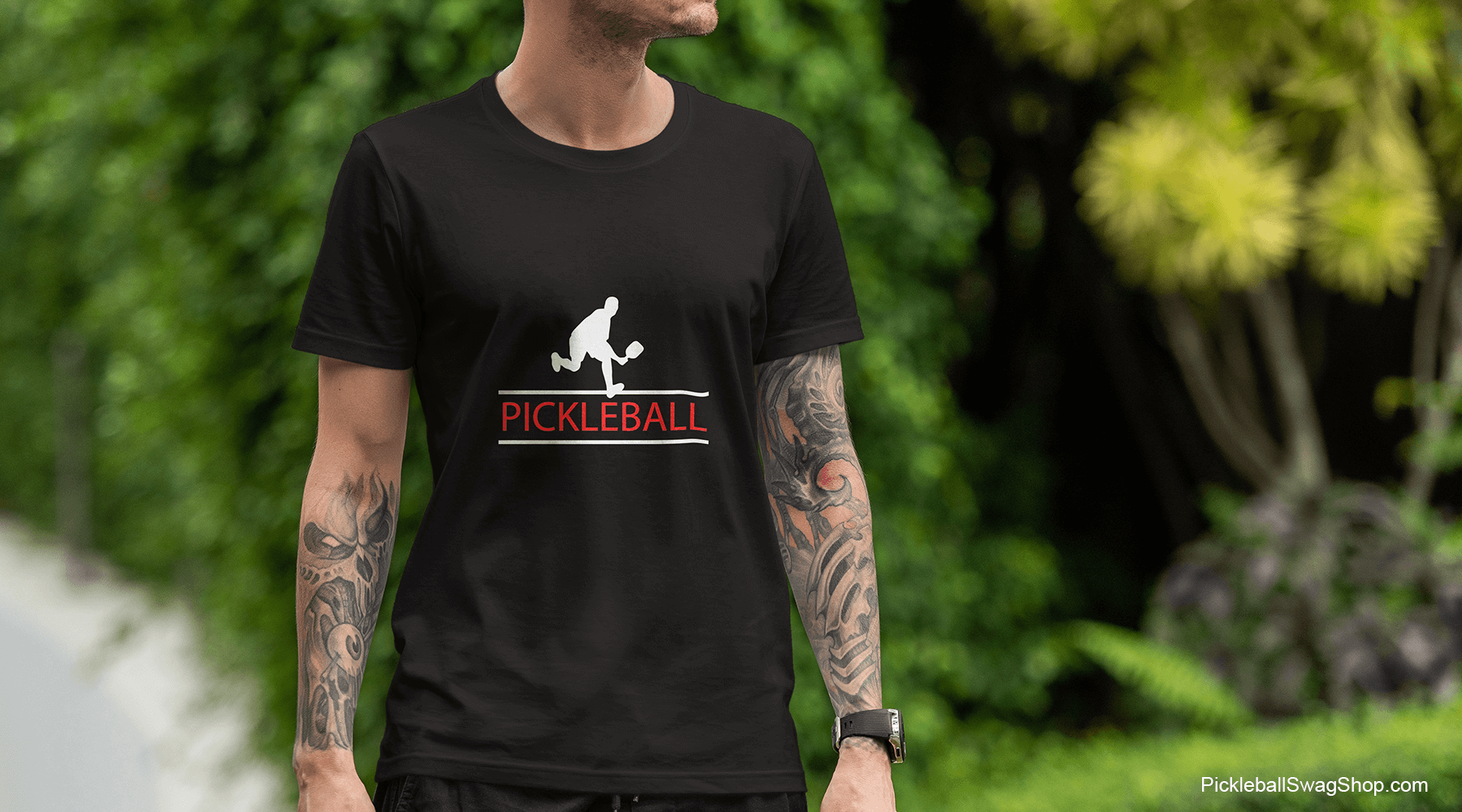Why You Don’t Need a Sound Engineer to Solve Your Pickleball Noise Problem
send him on his way
In the world of pickleball, the paddle hitting ball, the cheers of victory, and the laughs at a great game are all part of the charm. But sometimes, the pickleball sound can be a concern, particularly in residential areas.
The question is: Do you need a sound engineer to mitigate pickleball noise? Or are there simpler (i.e., less expensive) solutions?
No, you do not need to hire a pickleball sound engineer. There are many clear, obvious and cost effective solutions you can implement to reduce pickleball noise and we will walk you through each one.
In this article, we will:
- Examine the sources of pickleball noise and its typical decibel level
- Discuss the feasibility and cost of hiring a sound engineer for your pickleball courts
- Why a pickleball sound engineer is a waste of money
- Explore practical strategies for sound reduction and noise control in your outdoor pickleball court
- Provide useful tips for creating a quieter pickleball environment for all players and neighbors.
The Sound of Pickleball: Decibels and Measures
The sound of pickleball can be quite distinctive, as every hit of the paddle creates a unique acoustic. The decibel reading for pickleball noise typically falls around 60 to 65 dB, which is comparable to conversation at home or in a restaurant. These sound measurements, although not detrimental, may become bothersome in quiet neighborhoods or during early morning and late evening games.
We can almost hear you thinking…
The key here is not to eliminate the pickleball noise completely – it’s part of the game, after all – but to manage and reduce the sound levels to a more acceptable range.
Pickleball noise in decibels
The average pickleball sound, whether indoor or outdoor pickleball, is about 70 dBA. As a point of reference, any noise or sound greater than 80 dBA should try to be avoided and a dBA of greater than 90 can be harmful.
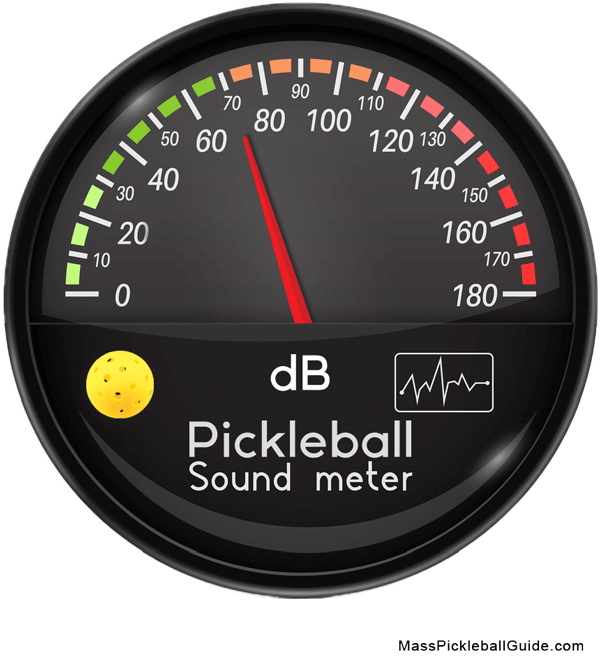
[dBA is an A-weighted decibel which is an expression of the relative loudness of sounds as perceived by the human ear. A-weighting is the standard for determining hearing damage. Source: TechTarget]
Even though pickleball averages 70 dBA (about the background noise of a Dunkins), this is still too much for some folks – or it just gives them something to hang their hat on. They may argue that any noise level from pickleball may be a nuisance. And, yes, we will admit pickleball noise is unique and can get in our heads as we’re lying awake in bed, but it does not make too many people say they want to quit pickleball altogether.
But the fact remains that while the paddle hitting the ball (and the ball bouncing off the court) averages 70 dBA it is still greater than tennis’s average 40 dBA. The facts are the facts and even in 2023 we cannot argue against them…you can, but we’re not.
The Cost of Professional Sound Engineering
When you think of pickleball sound mitigation, one option that might come to mind is hiring a professional sound engineer. A sound engineer is an expert in measuring and analyzing sound patterns and implementing solutions to manage and control these sounds. But while their expertise can be valuable, their services come with a cost that might not be necessary for managing pickleball noise.
The cost of a sound engineer can vary greatly based on factors such as the complexity of the project, the location of the site, and the level of the engineer’s experience and expertise. On average, the hourly rate for sound engineers can range from $200 to $500: it may even be more if you factor in travel and “expenses”.
Hiring a sound engineer to manage the sound of a pickleball court may be a bit of an overkill. A lot of the effective noise management strategies, as we have discussed earlier, can be implemented without the need for a professional sound engineer. Simple measures like proper court placement, using quieter equipment, restricting play hours, and installing sound barriers can significantly reduce the noise levels without incurring the professional costs.
Of course, if your pickleball courts are part of a much larger facility with more complex acoustic challenges, a sound engineer’s services might be valuable. In those cases, it’s best to obtain a detailed (free) quote from a few different engineers to compare costs and services.
Many times, you will absolutely need to hire a professional pickleball sound person simply to demonstrate “hey, we’ve done all we could, and we even hired an expert to tell us how to reduce the noise.” This may make others feel better that all has been done and there’s nothing else that can be done to reduce the noise. It can be a very expensive piece of paper to wave in front of your condo board.
Ultimately, the decision to hire a professional should be based on the unique needs and budget of your facility. It’s always a good idea to weigh the potential benefits against the cost and determine if the expense is necessary for your specific situation.
Why Hiring a Pickleball Sound Engineer May Not Be Necessary
Let’s walk this through.
Here’s the process of engaging a sound engineer for your pickleball court (SPOILER: it ain’t pretty):
- Referrals: Start by seeking referrals. You might wonder whether pickleball sound engineers specialize in this area, or if they are merely retired sound professionals who have branched into this niche.
- Vetting Candidates: Once you have a list of potential candidates, the next step is to vet them. This could involve phone calls or Zoom meetings to discuss their experience and expertise in the field of pickleball noise management. It can be challenging to gauge their knowledge about pickleball-specific acoustics, but this step is crucial to ensure you’re getting an expert in the field.
- Selection: After careful consideration, you make a decision and select a sound engineer that meets your requirements and expectations.
- On-site Evaluation: You then set up a date for the sound engineer to visit your pickleball court. During the visit, the engineer will have a conversation with you about your concerns, followed by a thorough walk around the court to observe and understand the environment. They may also sketch out the court layout and take various measurements for a detailed analysis.
- Post-Visit Analysis: After the site visit, you part ways with the sound engineer. They will then take some time (typically a week or so) to analyze the data collected during their visit.
- Report Delivery: Finally, you will receive an email containing the sound engineer’s findings. These findings will likely focus on several key areas, including:
- Equipment Selection: Suggestions for quieter balls and paddles that can help to lower the overall noise levels.
- Strategic Court Placement: Recommendations for the optimal placement of your court to reduce noise complaints, considering factors such as distance from homes and the layout of your community.
- Sound Barriers: Proposals for the installation or enhancement of sound barriers that can effectively dampen the noise from your court.
- Plant Buffer Zones: Suggestions for using natural elements, such as trees or bushes, as additional sound barriers.
- Regulated Playing Hours: Advice on setting specific play hours that minimize disruption to the surrounding community.
How awesome is that? We just saved you about $1,000 (BTW, you’re welcome).
Here’s the point…
The pickleball noise, at some level, will always be part of the game.
You know what to do to reduce the noise and you don’t need to hire anyone to tell you the sound of pickleball in decibels or how to mitigate the pickleball noise – you know what to do. So just do it, or some of it, and move on.
Sport Your Spirit: Pickleball Noise Apparel
Embrace the lighter side of pickleball with our whimsical t-shirt collection, specifically designed to humorously target the noise detractors of our beloved sport! Each shirt expresses the collective joy of the pickleball community, gently poking fun at those who find its characteristic sound bothersome.
Let us now walk you through the ways to reduce the noise…
Effective Pickleball Sound Reduction Strategies
Let’s delve into some strategies you can adopt to cut the pickleball noise without breaking the bank.
Court Location
First and foremost, consider the location of your pickleball courts. Courts that are expected to get a lot of use should not be located close to homes. As a rule of thumb, increasing the distance to homes can greatly reduce noise complaints. Doubling the distance, for instance, can drop sound levels by about 6 decibels in open areas, and even more when there are obstructions to sound propagation, like hills and shrubs.
Use of Sound Barriers
Pickleball sound barriers can also provide significant noise reduction. A 10 ft high wall can offer about 10 decibels of reduction, effectively cutting the perceived sound level in half. And higher barriers can yield even greater results.
Sound barriers can be either reflecting or absorbing. Reflecting barriers, like the Acoustifence, are more affordable but might reflect the pickleball sound back towards the courts or towards other homes. On the other hand, absorbing barriers, like the sound blankets made by eNoise Control, although more expensive, might be a better choice in certain situations as they absorb rather than reflect the noise.
Quieter Equipment
Using the quietest balls and “green” paddles available can also contribute to a significant reduction in noise, sometimes as much as 10 decibels. However, be aware that some players may resist using alternative gear.
There are several different types of pickleball balls to be used in the game depending on the circumstances. Just about every single pickleball game uses the standard hard plastic ball. For these balls, there are indoor and indoor options.
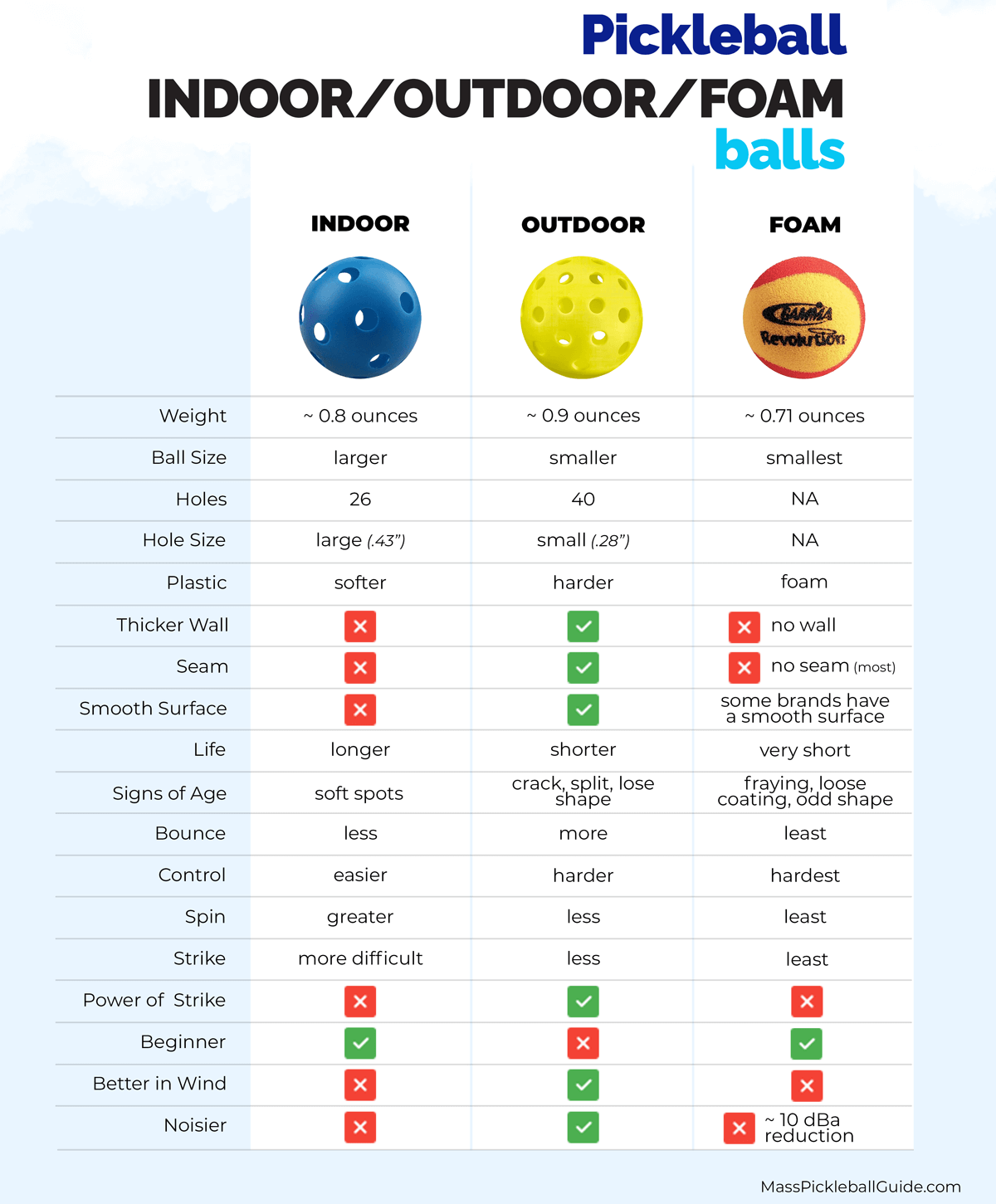
But, foam pickleball balls are becoming increasingly popular for their ability to reduce pickleball noise and hopefully quell and complaints about game noise.
Regulating Play Hours
Additionally, restricting play hours to times when noise would be less disruptive can also help reduce complaints.
The goal here is to approach the typical sound level of average neighborhoods, which is under 50 dBa. With the combination of sound barriers, quieter equipment, and a good distance from residential areas, it’s realistic to achieve this level.
It’s important to note that reducing sound to a level beyond this might prove challenging since sound will travel over barriers. The ultimate solution to that would be roofing the courts, essentially making them indoor facilities. However, this would add greatly to the cost and might not be a practical option.
Building a Quieter Pickleball Environment
A successful sound reduction strategy relies on community involvement. Communicating with your neighbors and pickleball group, discussing concerns and proposed solutions, and involving everyone in the decision-making process is key.
The pickleball community can collectively invest in sound reduction equipment and strategies, which is not only cost-effective but also fosters a sense of responsibility among players.
Conclusion
The sound of pickleball is part of the game. Sound engineers are undoubtedly useful, but with a little research and community effort, you can create a calm playing area without professional help.
